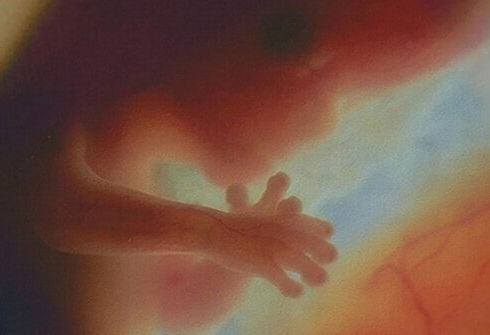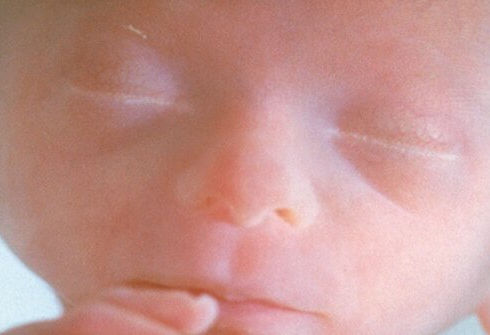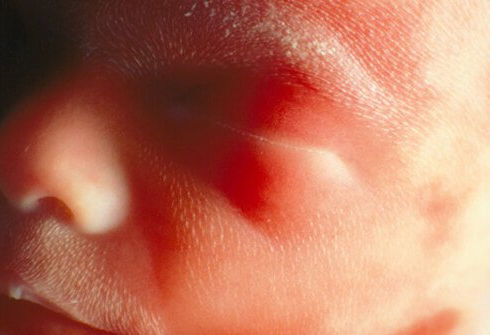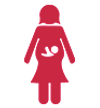
Pregnancy Trimesters
Stages of Pregnancy Week by Week
A typical pregnancy lasts 40 weeks from the first day of your last menstrual period (LMP) to the birth of the baby. It is divided into three stages, called trimesters: first trimester, second trimester, and third trimester. The fetus undergoes many changes throughout maturation.
A missed period is often the first sign that you may be pregnant, but how do you know for sure? Many women use home pregnancy tests to tell if they are pregnant; however, these tests are more likely to be accurate when used at least one week after a woman's last period. If you take the test less than 7 days before your last menstrual period, it may give you a false result. If the test is positive, it is more likely that you actually are pregnant. However, if the test is negative, there is an increased chance that the test is wrong. Your doctor can do a blood test to detect pregnancy sooner than a home pregnancy test can.
The Three Stages of Pregnancy
(1st, 2nd, and 3rd Trimester)

Conception to about the 12th week of pregnancy marks the first trimester. The second trimester is weeks 13 to 27, and the third trimester starts about 28 weeks and lasts until birth.
First Trimester

First Trimester: Early Changes in a Woman's Body
The early changes that signify pregnancy become present in the first trimester. A missed period may be the first sign that fertilization and implantation have occurred, ovulation has ceased, and you are pregnant. Other changes will also occur.
First Trimester:
Physical and Emotional Changes a Woman May Experience
Hormonal changes will affect almost every organ in the body. Some signs of early pregnancy in many women include symptoms like: Extreme fatigue, Tender, swollen breasts. Nipples may protrude, Nausea with or without throwing up (morning sickness), Cravings or aversion to certain foods, Mood swings, Constipation, Frequent urination, Headache, Heartburn, Weight gain or loss
First Trimester:
The Baby at 4 Weeks
At 4 weeks, your baby is developing: The nervous system (brain and spinal cord) has begun to form, The heart begins to form, Arm and leg buds begin to develop. Your baby is now an embryo and 1/25 of an inch long.

First Trimester:
The Baby at 8 Weeks
At 8 weeks, the embryo begins to develop into a fetus. All major organs have begun to form, The baby's heart begins to beat, The arms and legs grow longer, Fingers and toes have begun to form, Sex organs begin to form, The face begins to develop features, The umbilical cord is clearly visible.
At the end of 8 weeks, your baby is a fetus, and is nearly 1 inch long, weighing less than ⅛ of an ounce.

First Trimester:
The Baby at 12 Weeks
The end of the first trimester is at about week 12, at this point in your baby's development: The nerves and muscles begin to work together. Your baby can make a fist.
The external sex organs show if your baby is a boy or girl. Eyelids close to protect the developing eyes. They will not open again until week 28. Head growth has slowed, and your baby is about 3 inches long, and weighs almost an ounce.

Second Trimester

Second Trimester: Changes a Woman May Experience
Once you enter the second trimester you may find it easier than the first. Your nausea (morning sickness) and fatigue may lessen or go away completely. However, you will also notice more changes to your body. That "baby bump" will start to show as your abdomen expands with the growing baby. By the end of the second trimester you will even be able to feel your baby move!
Second Trimester:
Physical and Emotional Changes in a Woman
Some changes you may notice in your body in the second trimester include: Back, abdomen, groin, or thigh aches and pains, Stretch marks on your abdomen, breasts, thighs, or buttocks, Darkening of the skin around your nipples, A line on the skin running from belly button to pubic hairline (linea nigra) Patches of darker skin, usually over the cheeks, forehead, nose, or upper lip. This is sometimes called the mask of pregnancy (melasma, or Chloasma facies).
Numb or tingling hands (carpal tunnel syndrome) Itching on the abdomen, palms, and soles of the feet. (Call your doctor if you have nausea, loss of appetite, vomiting, yellowing of skin, or fatigue combined with itching. These can be signs of a liver problem.) Swelling of the ankles, fingers, and face. (If you notice any sudden or extreme swelling or if you gain a lot of weight quickly, call your doctor immediately. This could be a sign of a serious condition called preeclampsia.)
Second Trimester:
The Baby at 16 Weeks
As your body changes in the second trimester, your baby continues to develop: The musculoskeletal system continues to form, Skin begins to form and is nearly, translucent. Meconium develops in your baby's intestinal tract. This will be your baby's first bowel movement. Your baby begins sucking motions with the mouth (sucking reflex). Your baby is about 4 to 5 inches long and weighs almost 3 ounces.

Second Trimester:
The Baby at 20 Weeks
At about 20 weeks in the second trimester, your baby continues to develop: Your baby is more active. You might feel movement or kicking, Your baby is covered by fine, feathery hair called lanugo and a waxy protective coating called vernix. Eyebrows, eyelashes, fingernails, and toenails have formed. Your baby can even scratch itself.
Your baby can hear and swallow. Now halfway through your pregnancy, your baby is about 6 inches long and weighs about 9 ounces.

Second Trimester:
The Baby at 24 Weeks
By 24 weeks, even more changes occur for your growing baby: The baby's bone marrow begins to make blood cells, Taste buds form on your baby's tongue, Footprints and fingerprints have formed, Hair begins to grow on your baby's head, The lungs are formed, but do not yet work, Your baby has a regular sleep cycle, If your baby is a boy, his testicles begin to descend into the scrotum. If your baby is a girl, her uterus and ovaries are in place, and a lifetime supply of eggs has formed in the ovaries, Your baby stores fat and weighs about 1½ pounds, and is 12 inches long.

Third Trimester

Third Trimester
Week 29 – Week 40 (birth)
The third trimester is the final stage of pregnancy. Discomforts that started in the second trimester will likely continue, along with some new ones. As the baby grows and puts more pressure on your internal organs, you may find you have difficulty breathing and have to urinate more frequently. This is normal and once you give birth these problems should go away.
Third Trimester:
Emotional and Physical Changes a Woman May Experience
Hormonal changes will affect almost every organ in the body. Some signs of early pregnancy in many women include symptoms like: Extreme fatigue, Tender, swollen breasts. Nipples may protrude, Nausea with or without throwing up (morning sickness), Cravings or aversion to certain foods, Mood swings, Constipation, Frequent urination, Headache, Heartburn, Weight gain or loss
Third Trimester:
Changes as the Due Date Approaches
Other changes are happening in your body during the third trimester that you can't see. As your due date approaches, your cervix becomes thinner and softer in a process called effacement that helps the cervix open during childbirth. Your doctor will monitor the progress of your pregnancy with regular exams, especially as you near your due date.
Third Trimester:
The Baby at 32 Weeks
At 32 weeks in the third trimester, your baby's development continues: Your baby's bones are soft but fully formed, Movements and kicking increase, The eyes can open and close, Lungs are not fully formed, but practice "breathing" movements occur, Your baby's body begins to store vital minerals, such as iron and calcium, Lanugo (fine hair) begins to fall off. Your baby is gaining about ½ pound a week, weighs about 4 to 4½ pounds, and is about 15 to 17 inches long.

Third Trimester:
The Baby at 36 Weeks
At 36 weeks, as your due date approaches, your baby continues development: The protective waxy coating (vernix) thickens,
Body fat increases, Your baby is getting bigger and has less space to move around. Movements are less forceful, but you will still feel them. Your baby is about 16 to 19 inches long and weighs about 6 to 6½ pounds.

Third Trimester:
The baby at 37 to 40 Weeks
Finally, from 37 to 40 weeks the last stages of your baby's development occur: By the end of 37 weeks, your baby is considered full term. Your baby's organs are capable of functioning on their own. As you near your due date, your baby may turn into a head-down position for birth. Average birth weight is between 6 pounds 2 ounces to 9 pounds 2 ounces and average length is 19 to 21 inches long. Most full-term babies fall within these ranges, but healthy babies come in many different weights and sizes.


Fathima hospital, backed by specialists from multiple disciplines, specialises in handling high risk pregnancies. It is important to note that women, who are diagnosed with high-risk issues, mostly go on to have a normal pregnancy and a healthy delivery.

Fathima hospital offers pain relief programs that are globally applied to ease pain during labour. There are a number of options to ensure painless delivery, many of which pregnant women here are not aware of.

Fetal medicine focuses on the care of pregnant women where there is a need to monitor the health and wellbeing of the unborn child (fetus). This includes monitoring the rate of the baby’s growth, as well as diagnosing and managing fetal disorders and abnormalities using both invasive and non-invasive methods.

Our specialized fertility experts are highly experienced, and their technology and strict processes ensure high success rates. IVF (In-Vitro Fertilization) is a type of assisted reproductive technology which involves a series of procedures to treat fertility and assist with the conception of child.

Fathima Hospital has customized Antenatal programmes designed to make you feel safe, good and happy, these programmes educate you on the process of childbirth and the different stages of labour - in all, encouraging natural birthing as much as possible.

Postnatal exercises are important for you. They help you regain the strength of your abdominal muscles and help prevent lower back injury and other complications like abdominal organs from "drooping forward" due to lack of support. They also help you regain a flat stomach.

Our OB/GYN surgeons offer a variety of traditional and minimally invasive surgical procedures: Tubal ligation, removal of ovarian cysts, fibroids, growths from the cervix, Removal of the uterus (hysterectomy), ovaries, Hysteroscopy etc.

Fetal medicine, which is an extension of the branch of Ultrasonography, treats the fetus as a patient in utero for any problems it might have. It comprises of Fetal scanning, Procedures such as Amniocentesis, chorionic villus sampling, and cord blood sampling, Screening tests and interpretation of the results.

When it comes to your little one’s health, you need to be extra sure. Hence, you want to know all the whys and when of vaccinations to be administered to your child from the time of birth. Keeping that in mind, we hand you over a vaccination schedule for your baby with all the mandatory and optional vaccines prescribed from the time of birth.
